The pace of winter walks is often dictated by the need to keep warm, especially if your circulation is as poor as mine. But even when you pick up the pace, the opportunities for wildlife photography are often easy to spot – with the lack of leaves on trees and bushes and any movement being at odds with the stillness that comes with the cold weather. When spring arrives and the vegetation begins to grow back, it is worth slowing the pace of your walk around your local patch. Not only will doing this keep you cool as the weather warms up, but it will also give you the time to notice the wildlife springing into life around you.
Fair weather foxes
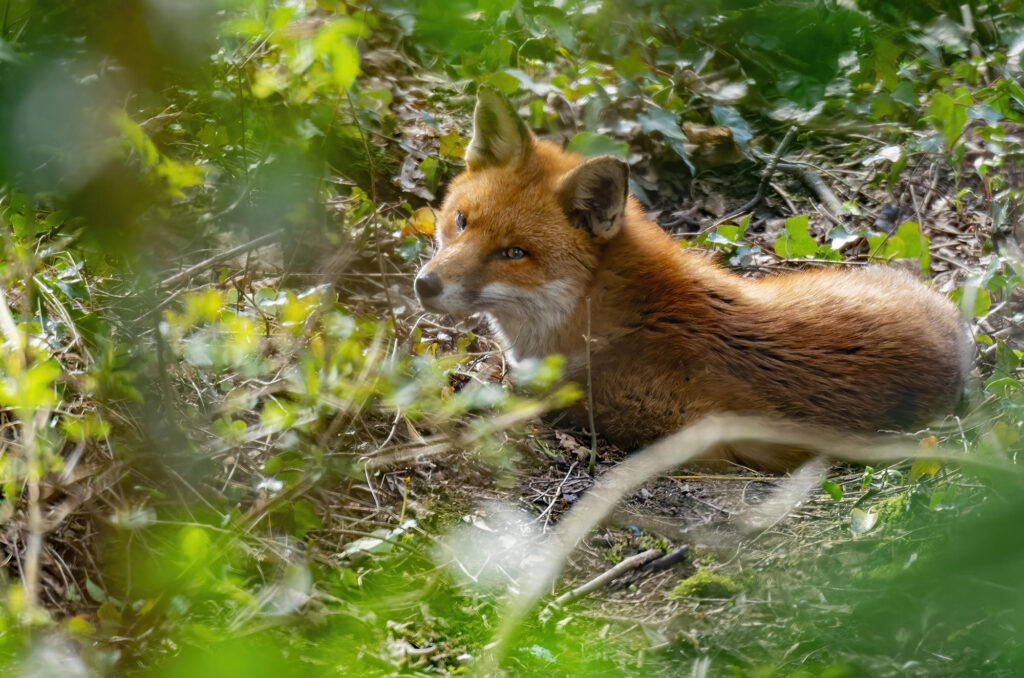
It is usually around this time of year that I notice the lack of foxes hanging around during daylight hours. I bemoan the long grass obscuring my view and even begin to long for winter to return. But this spring is proving surprisingly productive when it comes to photographing the local foxes.
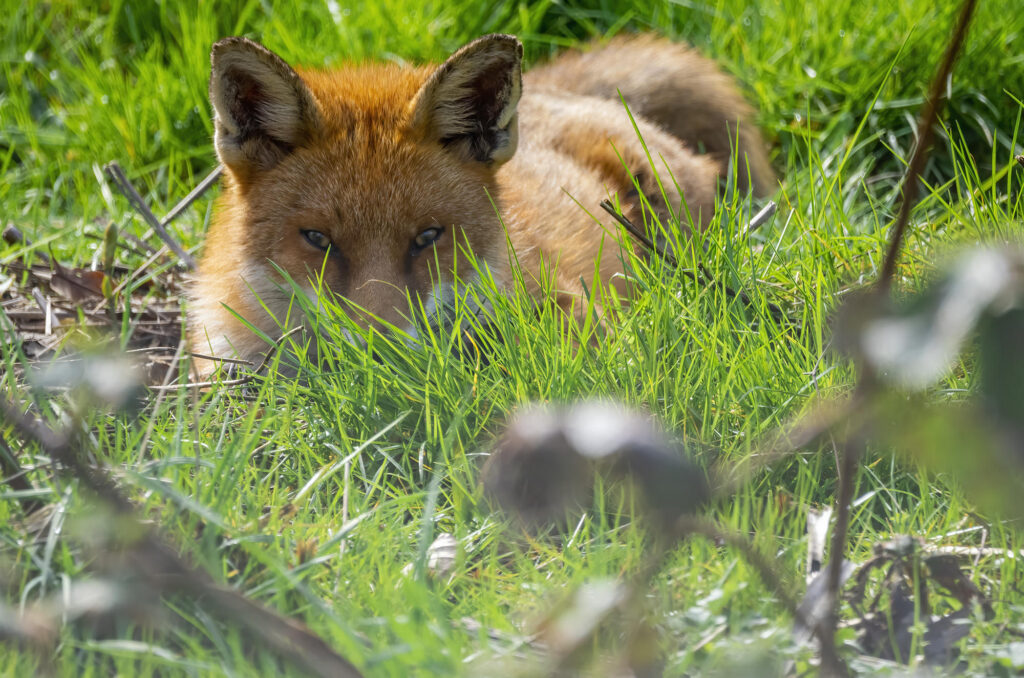
Much of this is due to giving myself enough time to take in the landscape in front of me. Trees line the banks of the burn, and the grass is long in the meadows beyond. It is a cluttered view, and it is easy to march right past a snoozing fox. The rust colour of their coat can help now that the grass is literally greener – looking for an orange patch in a sea of green is a good start. But just slowing my walk as I pass the banks of the burn has provided three close-up encounters with sunbathing individuals.
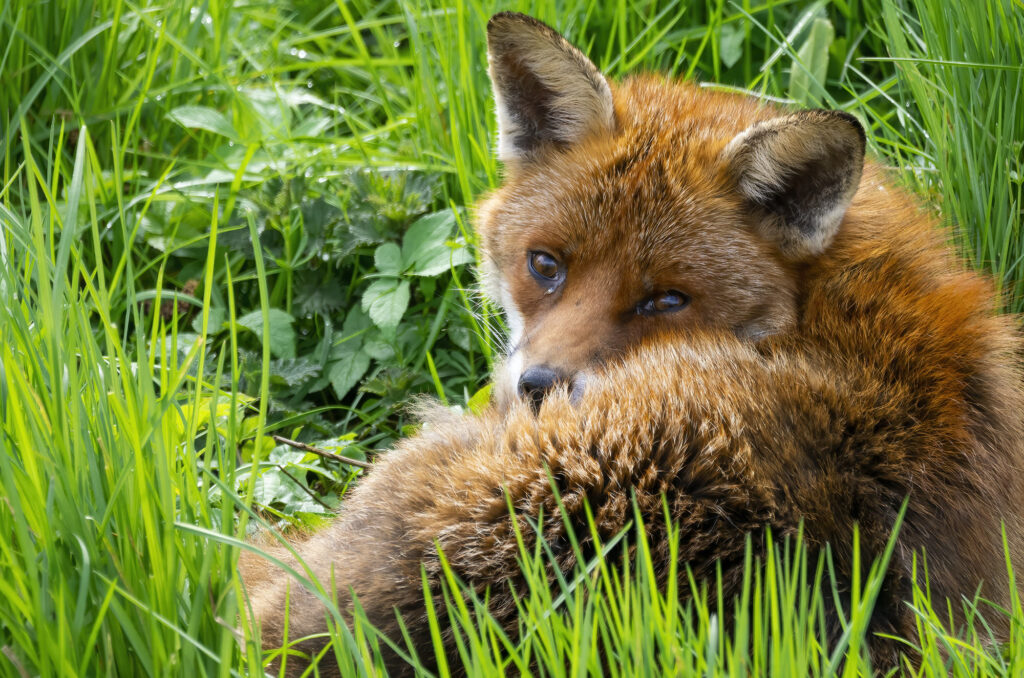
I spotted the foxes – shown in the images above – from a distance by approaching steadily and could capture them relaxed and unperturbed by my presence by staying quiet and moving slowly. I am not sure how long this sunbathing behaviour will last as the weather warms up, but I am grateful for the foxes making frequent daylight appearances this spring.
Nesting necessities
While the foxes are a subject I have returned to many times, spring can also herald the start of something brand new.
It was a bright day. Luckily, not the sort of day that produces flat light that leeches the colour and detail from your images. No, this was a golden sun and blue sky kind of day. Perfect for wandering through the woods and pointing the camera upwards.
It was a fluttering above my head that alerted me to the bird. I was treading carefully and slowly to avoid disturbing any deer resting on the leafy carpet between the trees. The female chaffinch landed on a branch nearby. Her beak was filled with moss. And one long hair that had probably once belonged to one of the Highland cows from the nearby fields. Hers to use now.
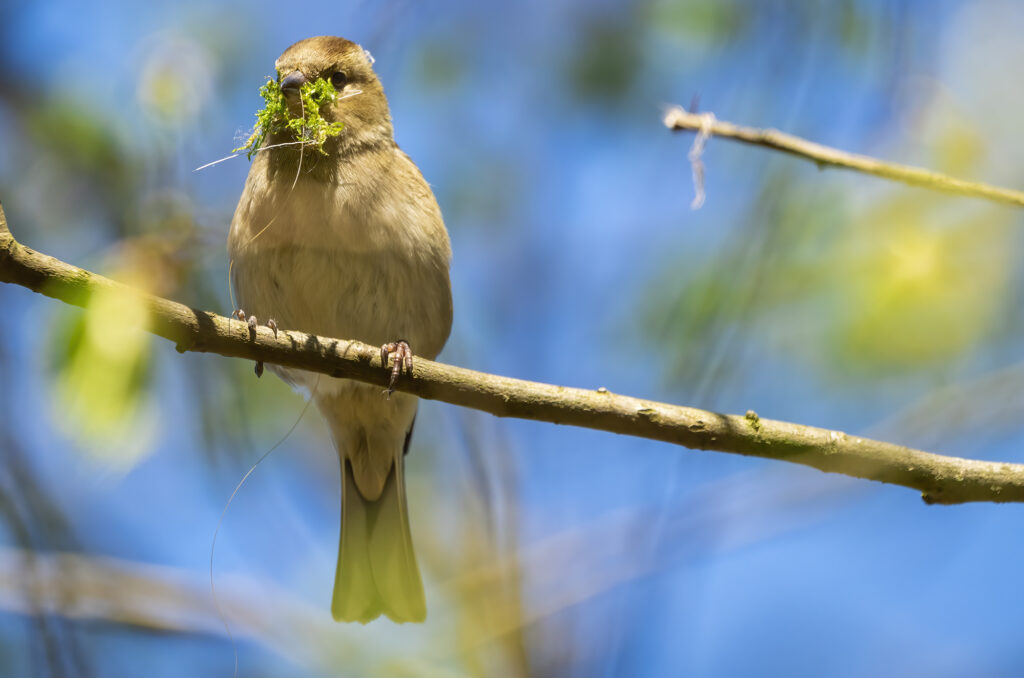
I captured a few images of her on exposed branches before she busied herself around the broken top of the tree. I assumed she was pulling material away from the tree to add to her stash but, instead of walking away, I decided to wait and watch her anyway. I was in no rush. It turned out that my assumption was wrong. She was busy stuffing the moss into the cavity in the slim tree trunk. I couldn’t get a closer look without disturbing her and made a mental note to take a look from a different viewpoint another day.
I fully expected that there wouldn’t be anything of note there when I returned. It didn’t look like a good spot to nest; too exposed to the elements, too precarious, too near to the ground. I came back two days later and watched the sun play hide and seek while the clouds rushed overhead on a strengthening wind. I approached from the opposite direction to have a clear view of the tree and there it was; a perfectly formed bowl of moss, webs and hair. The nest was empty but the male was nearby, riding the wind gusts perched on a branch.
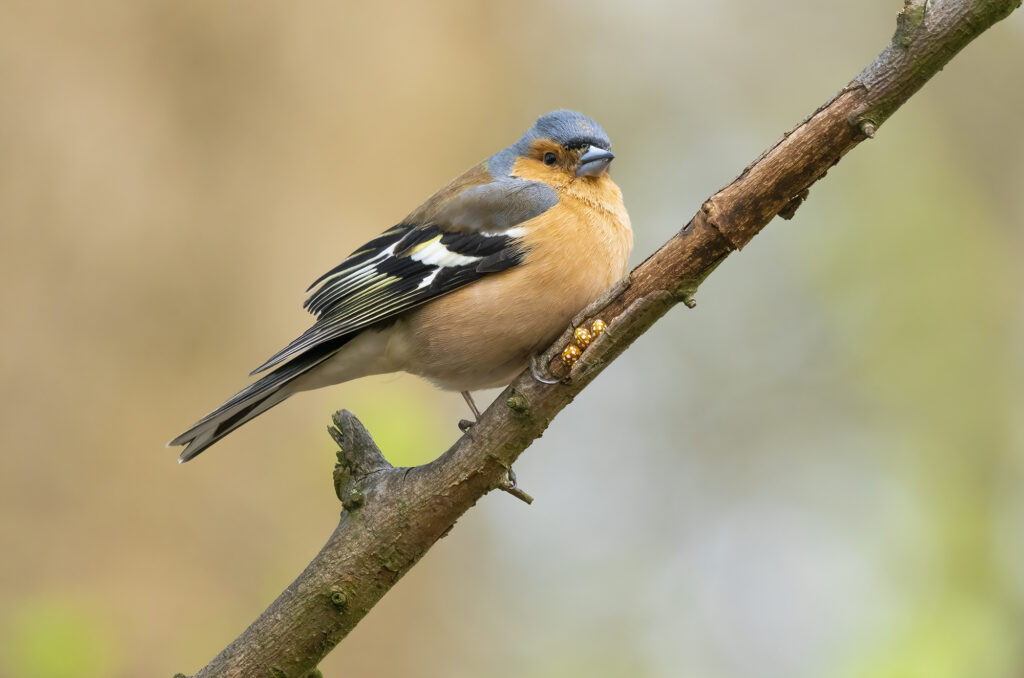
When I turned my attention back to the nest, the female arrived. She adjusted the nest lining while I watched from a respectable distance. Then she flew off and left it rocking in the wind. I left the woods with a churning sensation in my stomach – a mixture of excitement at finding the nest and the sinking feeling that it was in the wrong place at the wrong time to be a success. Mrs chaffinch obviously hadn’t seen the weather forecast for the coming days. I had.
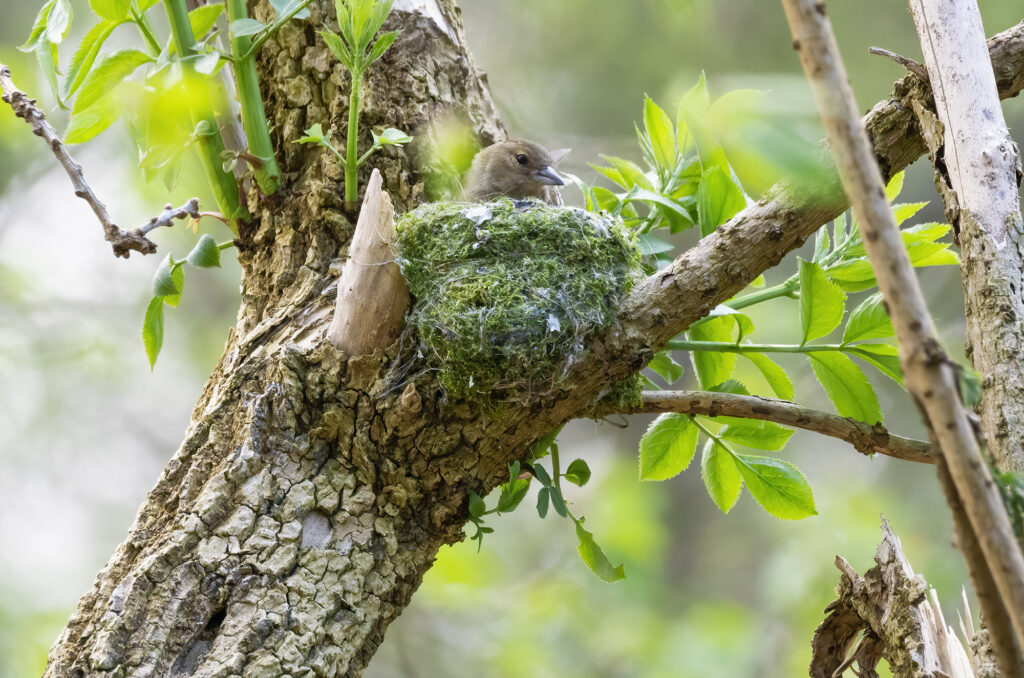
When I returned after the weekend, the sinking feeling remained as I crunched through the woods towards that battered tree. I raised my lens to take a look from a distance and found an empty fork in the branches where the nest had been. I hoped she had moved the nest, as chaffinches will do this if their chosen location is deemed unsatisfactory (see my species spotlight blog for more about this). As I moved closer, the tattered shreds of moss hanging from the other side of the tree wavered in the lightest breeze. The nest was gone – returned to bits of moss, webs and hair. I saw roe deer buck Quint watching me from his tucked-up position on the ground under a tree, probably wondering why the camera wasn’t pointing in his direction as usual.
There was no point dwelling on the disappointment; that’s nature. Hopefully, the chaffinches will try again. And it’s hard to remain glum when you can spend time with the scruffiest old buck in the woods. I turned and pointed my lens in Quint’s direction, and he closed his eyes as though he expected as much.
Dishevelled deer
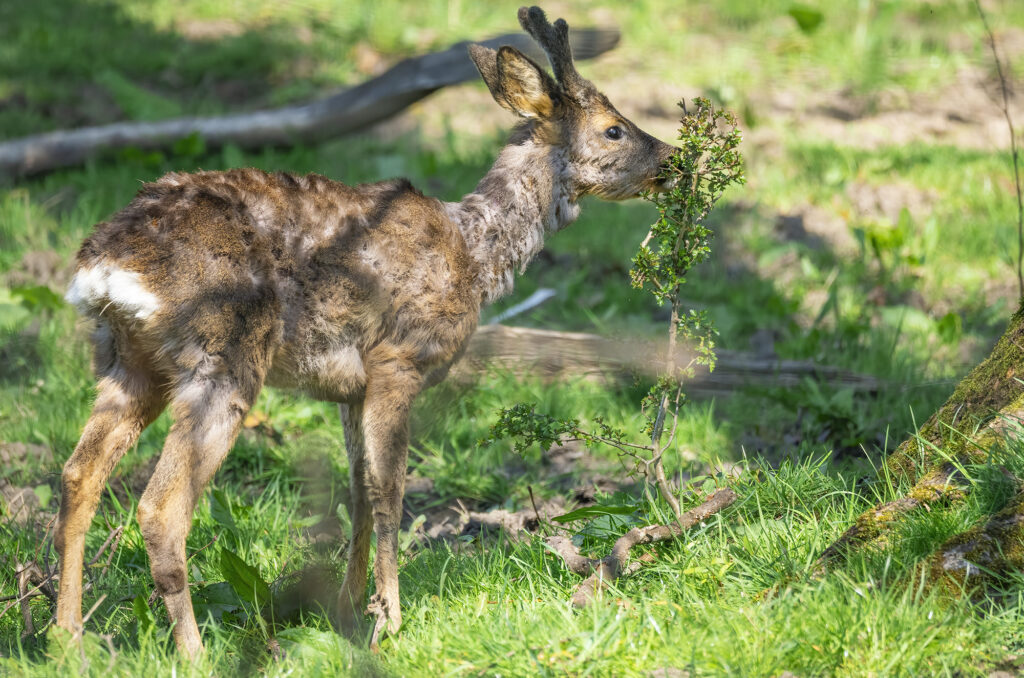
The local roe deer are a subject that I always need to take the slow and steady approach with, no matter what the season. However, after a lack of any real activity from them during the past few months, their behaviour is warming up, like the weather. While the older bucks’ antlers are now clean, meaning that the velvet has rubbed off, the young bucks still have the fuzzy coating. Their darker winter coats are also coming off – some more slowly and patchy than others – revealing the rust-tinted summer coat beneath.
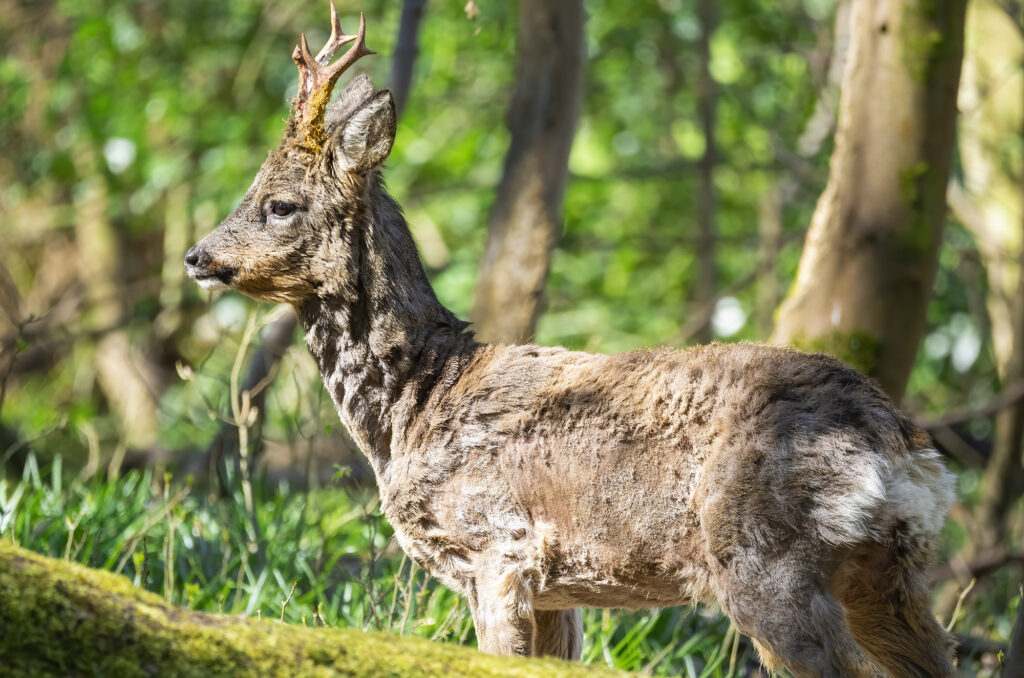
Spending quiet time with the deer recently has provided some incredibly close encounters and allowed me to witness how their behaviour towards each other changes as spring progresses. I will provide more of an update soon, but the return of Blue and her youngsters – after what seemed like an age without seeing them – felt like a leap towards brighter days ahead.
So, as spring springs along, try to slow down and keep your eyes open for the small changes around you. They might just provide the opportunity to photograph a new subject or show you a familiar species in a new light.

